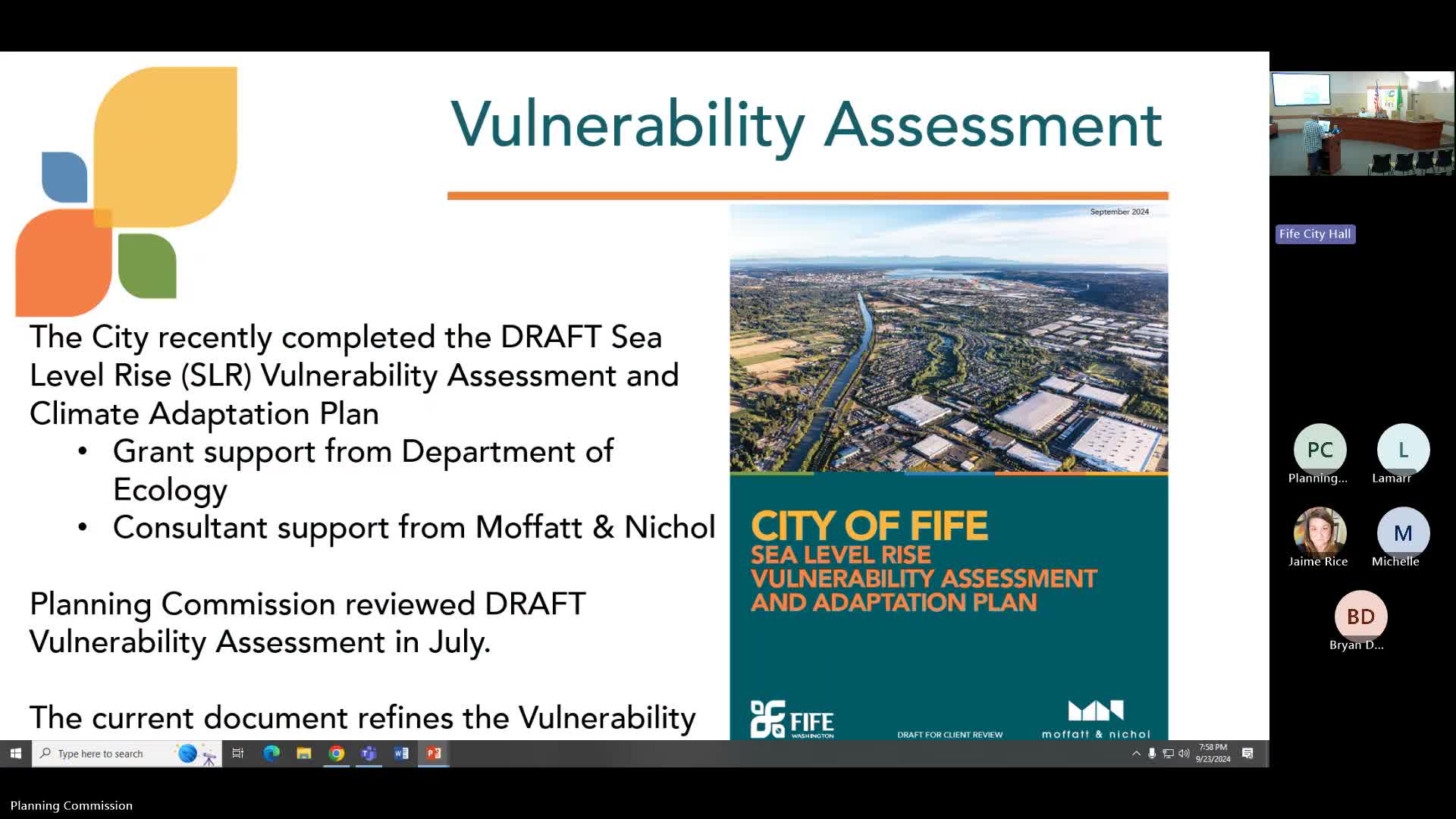City unveils urgent plan to combat sea level rise
September 23, 2024 | Fife, Pierce County, Washington
This article was created by AI summarizing key points discussed. AI makes mistakes, so for full details and context, please refer to the video of the full meeting. Please report any errors so we can fix them. Report an error »

In a recent government meeting, officials presented the completed draft of a sea level rise vulnerability assessment, marking a significant step in the city's adaptation planning efforts. The assessment, which was initially reviewed in July, aims to address the potential hazards posed by climate change, particularly flooding from rivers and rainfall, as well as the impacts on infrastructure and ecosystems.
The adaptation planning process is structured in phases, with the current focus on defining hazards, assessing vulnerabilities, and developing an adaptation framework. Officials emphasized the importance of understanding the sensitivity of various assets to flooding, noting that recreational fields are less vulnerable than residential properties.
Public engagement efforts, which began in April, yielded valuable feedback, although participation was described as moderate. Key concerns raised by the community included emergency management, hazard mitigation, and the need for proactive measures to safeguard future generations. One notable comment highlighted the desire to \"Grow Fife in a good way for our children and grandchildren,\" underscoring the long-term vision of the planning process.
The assessment utilized the best available science to evaluate two primary scenarios: projections of sea level rise and changes in stream flows in the Puyallup River. Findings indicate shifts in the timing and intensity of both high and low flow events, reflecting broader trends in climate change.
The city plans to present the adaptation plan to the council in the coming days, aiming to align their strategies with the anticipated timeline for city center developments. This initiative represents a proactive approach to addressing the challenges posed by climate change and ensuring the resilience of the community.
The adaptation planning process is structured in phases, with the current focus on defining hazards, assessing vulnerabilities, and developing an adaptation framework. Officials emphasized the importance of understanding the sensitivity of various assets to flooding, noting that recreational fields are less vulnerable than residential properties.
Public engagement efforts, which began in April, yielded valuable feedback, although participation was described as moderate. Key concerns raised by the community included emergency management, hazard mitigation, and the need for proactive measures to safeguard future generations. One notable comment highlighted the desire to \"Grow Fife in a good way for our children and grandchildren,\" underscoring the long-term vision of the planning process.
The assessment utilized the best available science to evaluate two primary scenarios: projections of sea level rise and changes in stream flows in the Puyallup River. Findings indicate shifts in the timing and intensity of both high and low flow events, reflecting broader trends in climate change.
The city plans to present the adaptation plan to the council in the coming days, aiming to align their strategies with the anticipated timeline for city center developments. This initiative represents a proactive approach to addressing the challenges posed by climate change and ensuring the resilience of the community.
View full meeting
This article is based on a recent meeting—watch the full video and explore the complete transcript for deeper insights into the discussion.
View full meeting
